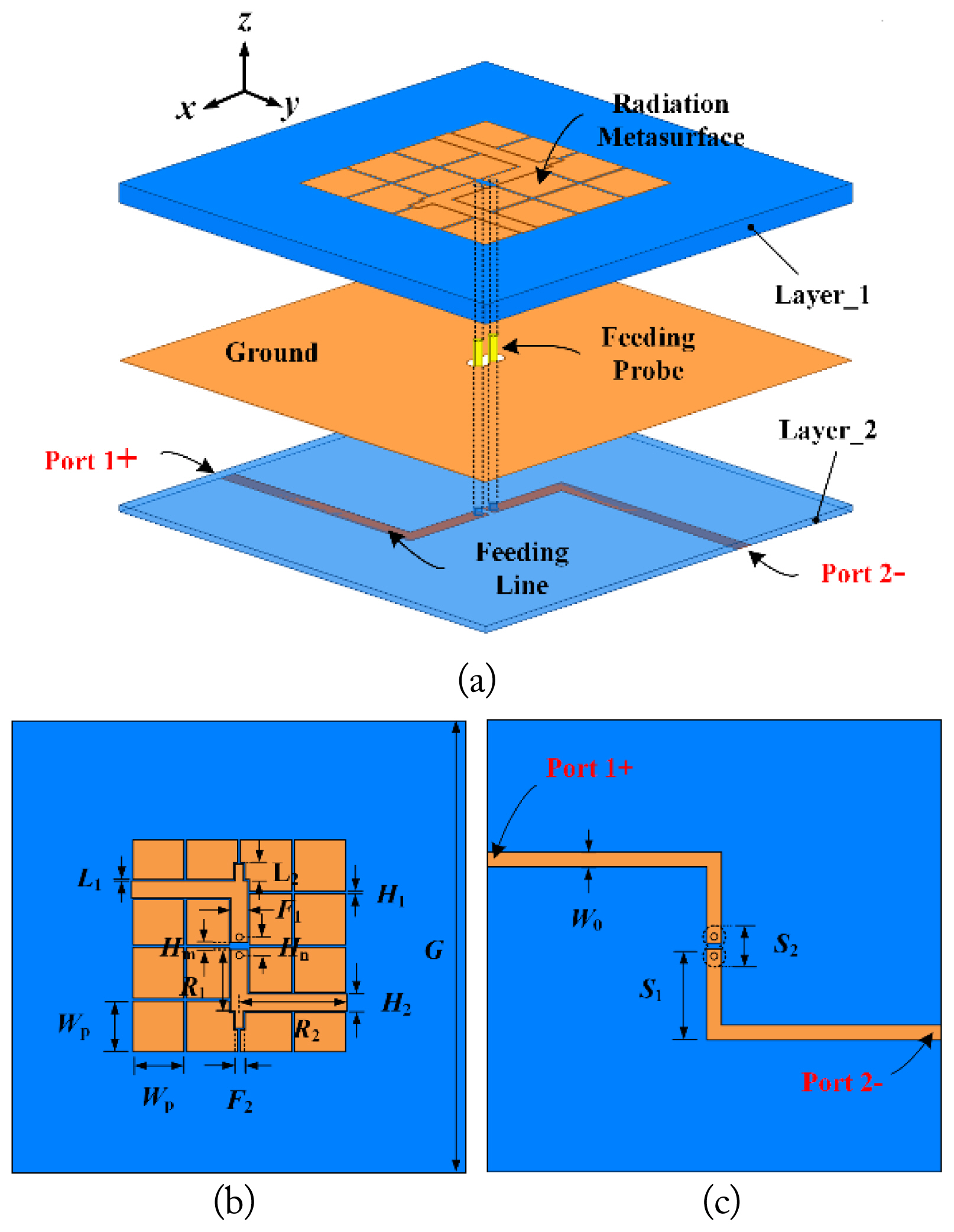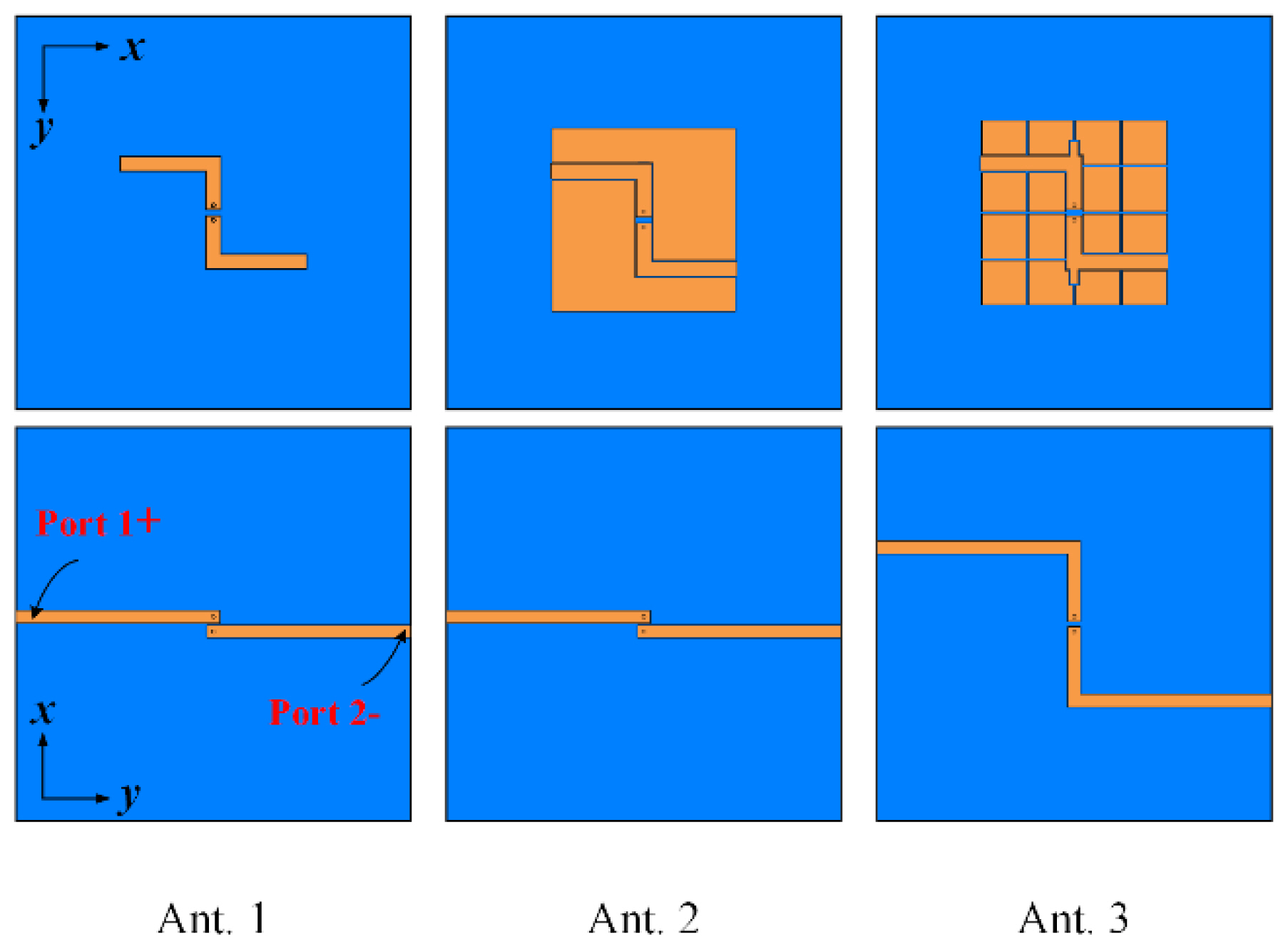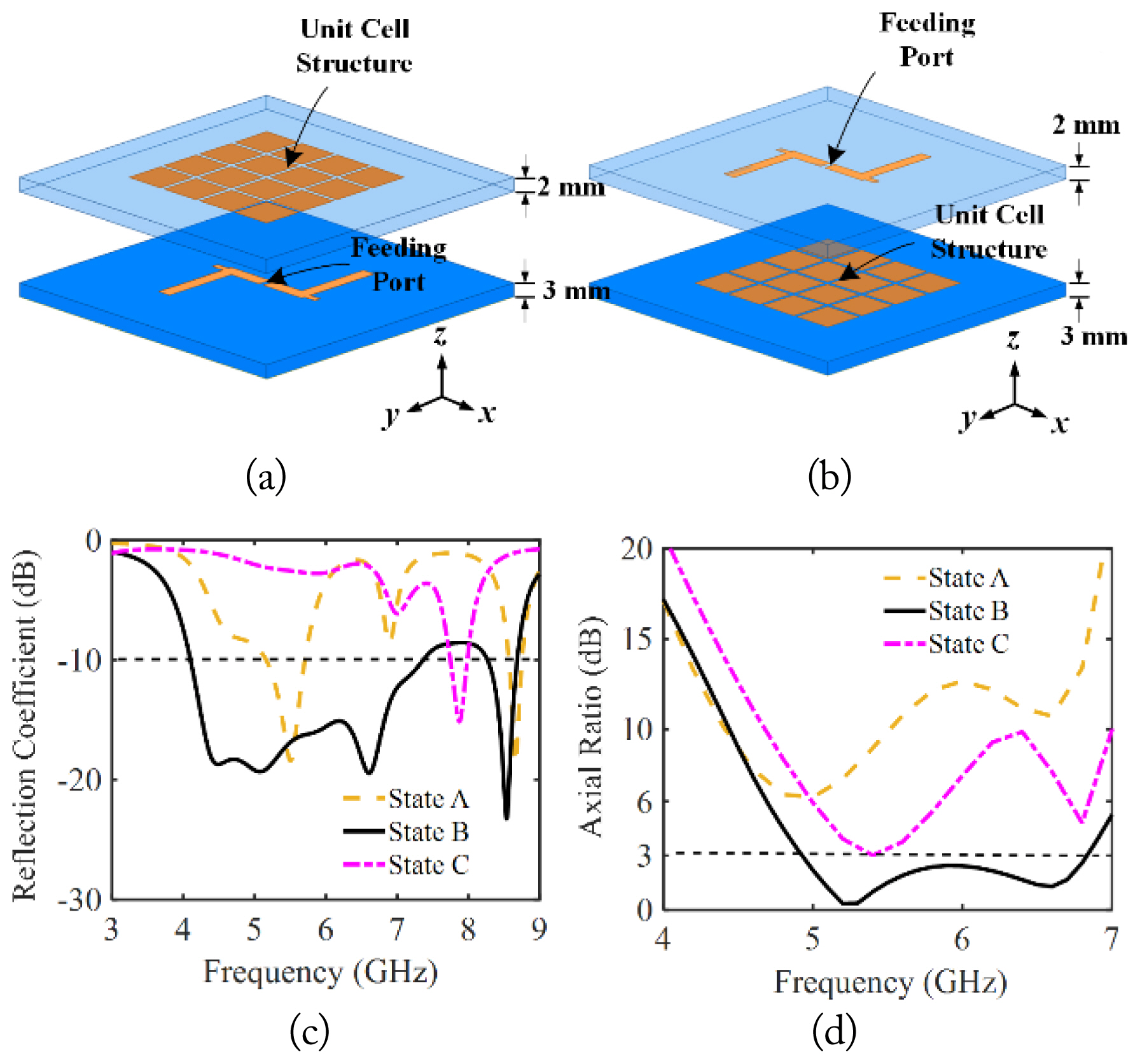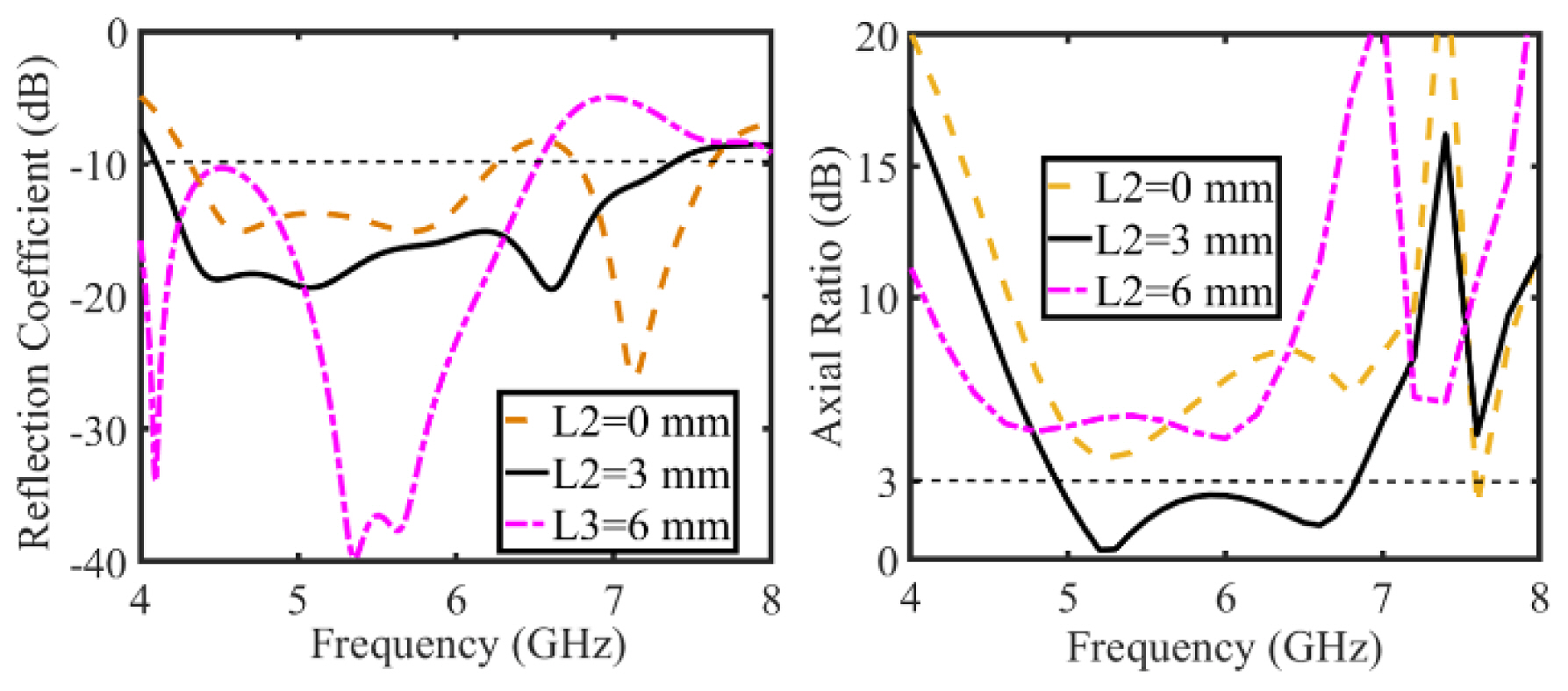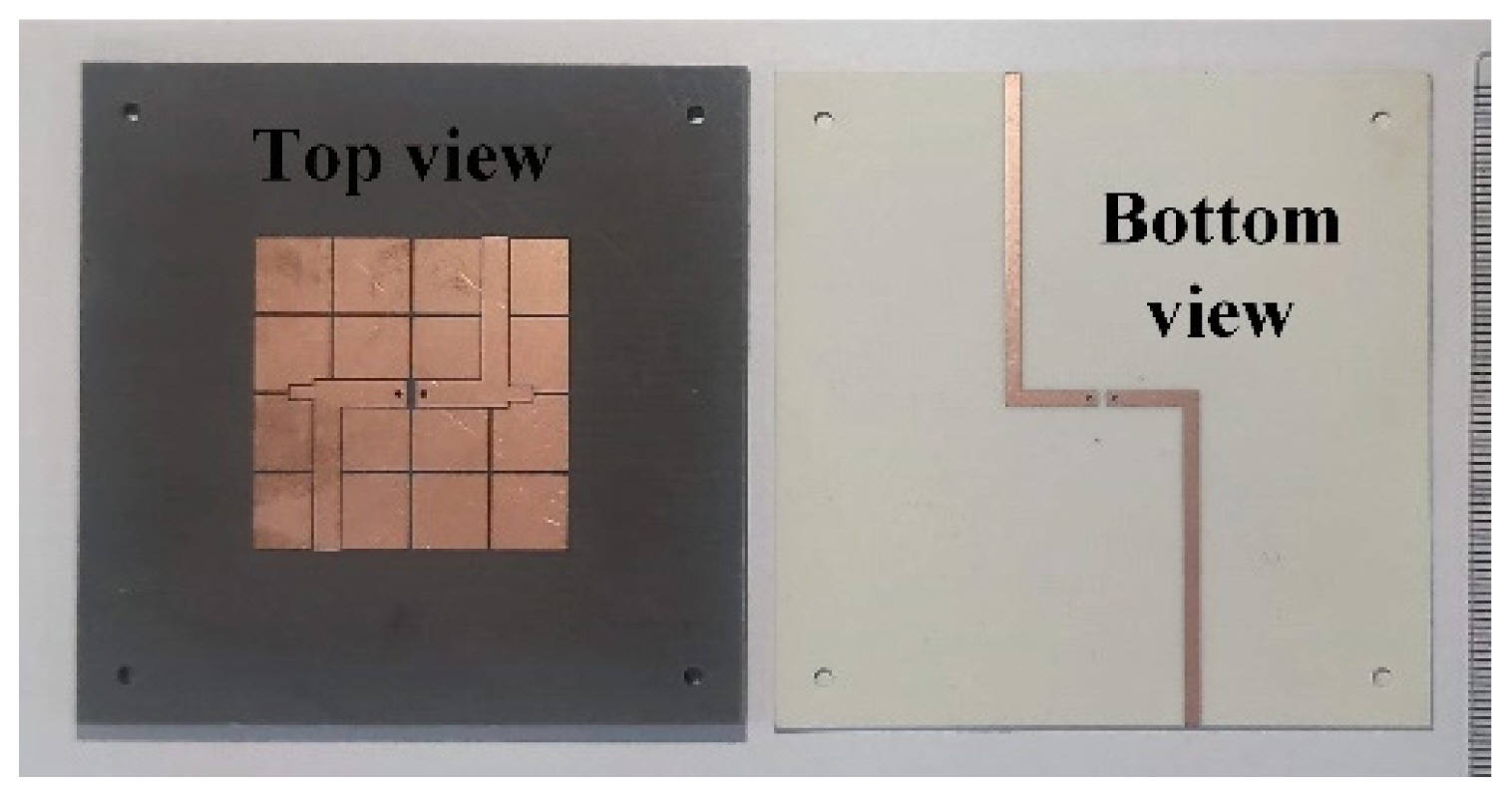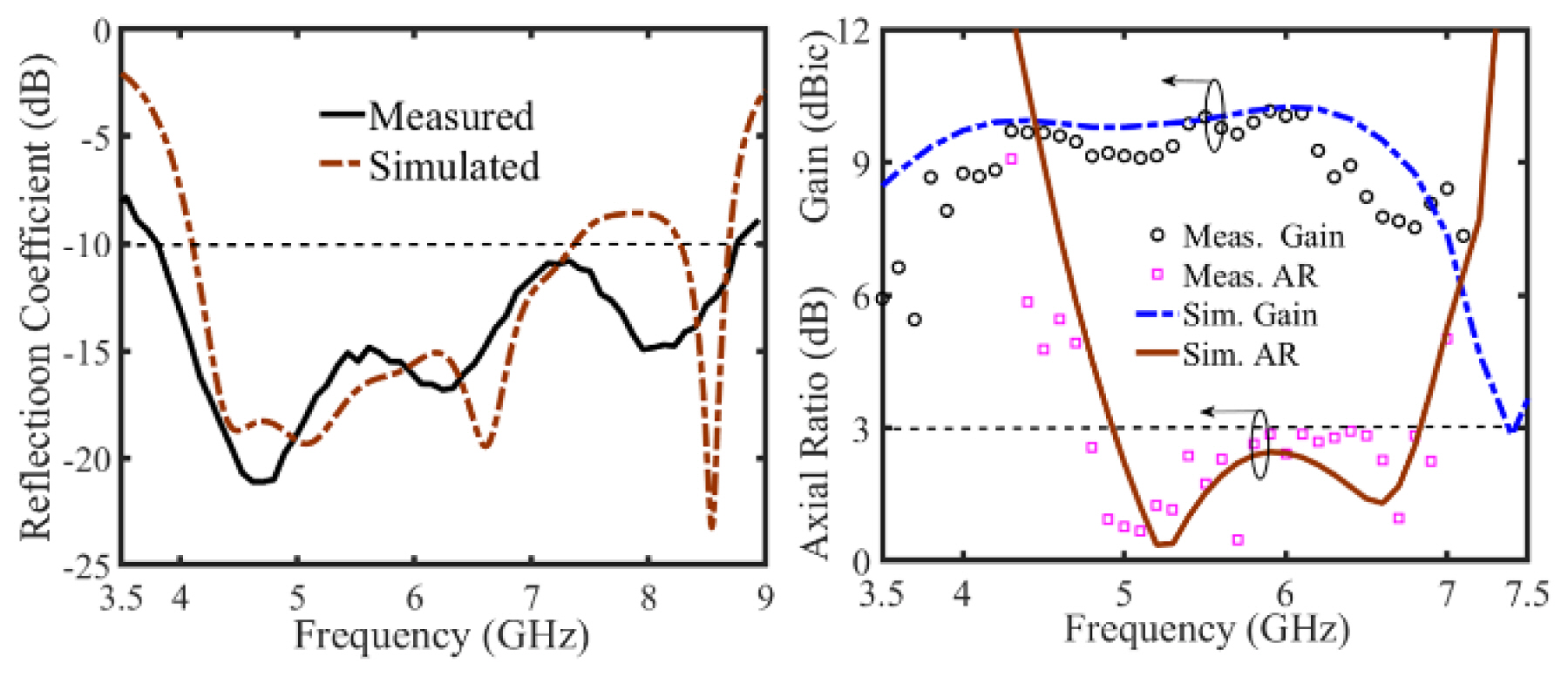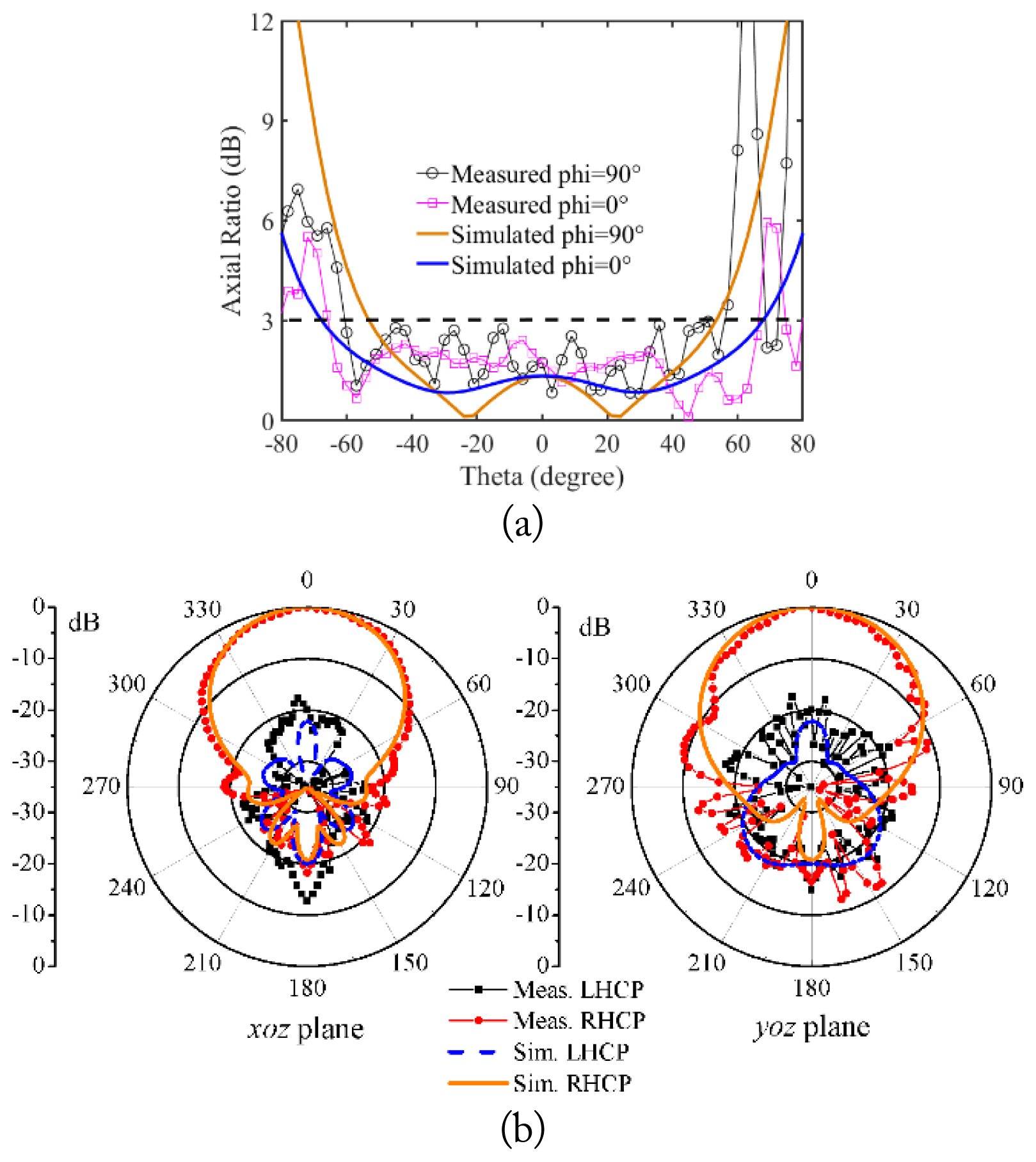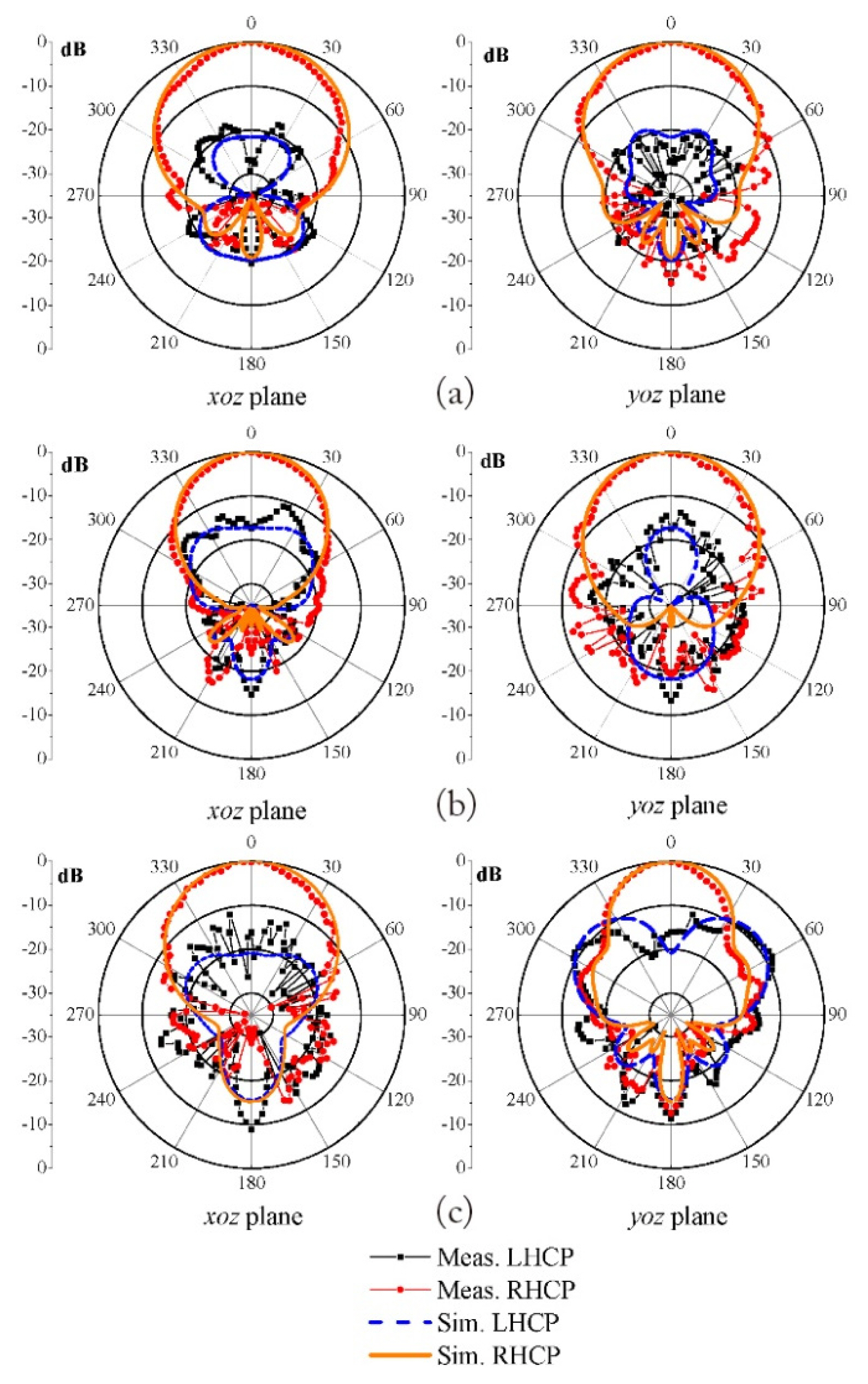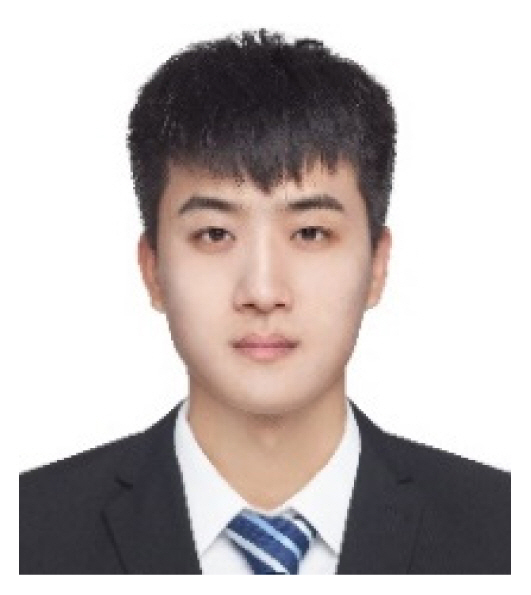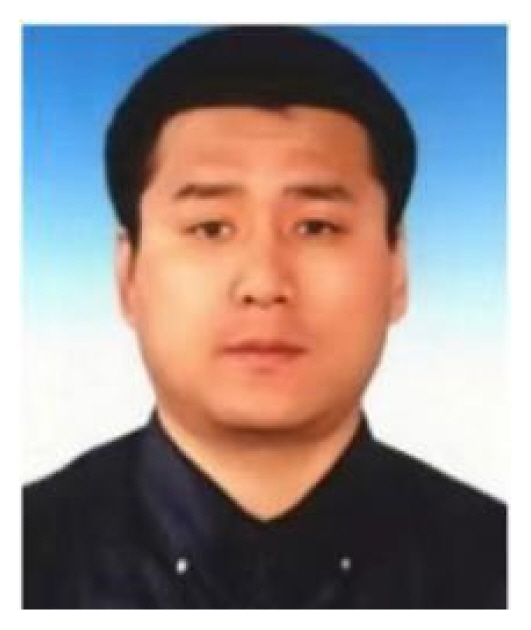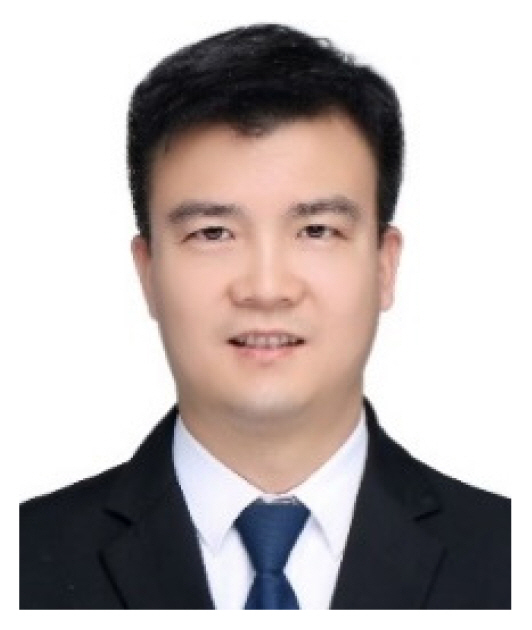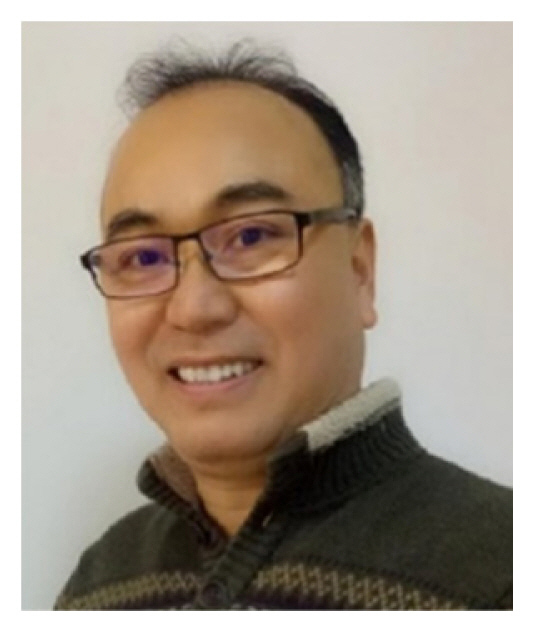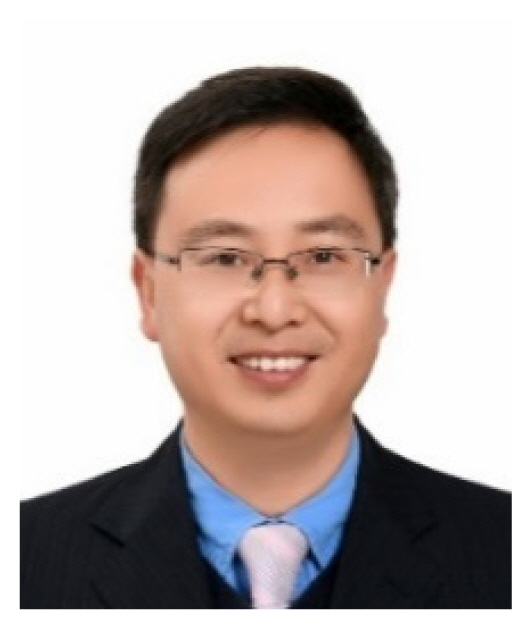1. F. Zhu, Q. Luo, and S. Gao, Circularly Polarized Antennas. Hoboken, NJ: Wiley, 2013.
2. F. Ferrero, C. Luxey, G. Jacquemod, and R. Staraj, "Dual-band circularly polarized microstrip antenna for satellite applications,"
IEEE Antennas and Wireless Propagation Letters, vol. 4, pp. 13ŌĆō15, 2005.
https://doi.org/10.1109/LAWP.2004.841622

3. C. Deng, X. Lv, and Z. Feng, "Low-profile circularly polarised patch-ring antenna with compact feeding network,"
IET Microwaves Antennas & Propagation, vol. 12, no. 3, pp. 410ŌĆō415, 2017.
https://doi.org/10.1049/iet-map.2017.0637

4. Y. X. Guo and D. C. H. Tan, "Wideband single-feed circularly polarized patch antenna with conical radiation pattern,"
IEEE Antennas and Wireless Propagation Letters, vol. 8, pp. 924ŌĆō926, 2009.
https://doi.org/10.1109/LAWP.2009.2028909

5. N. Yan, K. Ma, and Y. Luo, "An SISL sequentially rotated feeding circularly polarized stacked patch antenna array,"
IEEE Antennas and Wireless Propagation Letters, vol. 68, no. 3, pp. 2060ŌĆō2067, 2020.
https://doi.org/10.1109/TAP.2019.2957096

6. K. Ding, C. Gao, D. Qu, and Q. Yin, "Compact broadband circularly polarized antenna with parasitic patches,"
IEEE Transactions on Antennas and Propagation, vol. 65, no. 9, pp. 4854ŌĆō4857, 2017.
https://doi.org/10.1109/TAP.2017.2723938

7. L. Wang, Z. Zhu, and Y. En, "Performance enhancement of broadband circularly polarized slotŌĆōmicrostrip antenna using parasitic elements,"
IEEE Antennas and Wireless Propagation Letters, vol. 20, no. 12, pp. 2255ŌĆō2259, 2021.
https://doi.org/10.1109/LAWP.2021.3104850

8. R. Xu, J. Y. Li, and W. Kun, "A broadband circularly polarized crossed-dipole antenna,"
IEEE Transactions on Antennas and Propagation, vol. 64, no. 10, pp. 4509ŌĆō4513, 2016.
https://doi.org/10.1109/TAP.2016.2588523

9. T. K. Nguyen, H. H. Tran, and N. Nguyen-Trong, "A wideband dual-cavity-backed circularly polarized crossed dipole antenna,"
IEEE Antennas and Wireless Propagation Letters, vol. 16, pp. 3135ŌĆō3138, 2017.
https://doi.org/10.1109/LAWP.2017.2764923

10. G. Feng, L. Chen, X. Wang, X. Xue, and X. Shi, "Broadband circularly polarized crossed bowtie dipole antenna loaded with parasitic elements,"
IEEE Antennas and Wireless Propagation Letters, vol. 17, no. 1, pp. 114ŌĆō117, 2018.
https://doi.org/10.1109/LAWP.2017.2777442

11. Nasimuddin, Y. S. Anjani, and A. Alphones, "A widebeam circularly polarized asymmetric-microstrip antenna,"
IEEE Transactions on Antennas and Propagation, vol. 63, no. 8, pp. 3764ŌĆō3768, 2015.
https://doi.org/10.1109/TAP.2015.2438397

12. S.B. Vignesh, Nasimuddin, and A. Alphones, "Stubs-integrated-microstrip antenna design for wide coverage of circularly polarised radiation,"
IET Microwaves, Antennas & Propagation, vol. 11, no. 4, pp. 444ŌĆō449, 2017.
https://doi.org/10.1049/iet-map.2016.0366

13. M. K. Ray, K. Mandal, and N. Nasimuddin, "Low-profile circularly polarized patch antenna with wide 3 dB beamwidth,"
IEEE Antennas and Wireless Propagation Letters, vol. 18, no. 12, pp. 2473ŌĆō2477, 2019.
https://doi.org/10.1109/LAWP.2019.2940703

14. X. Chen, D. Wu, L. Yang, and G. Fu, "Compact circularly polarized microstrip antenna with cross-polarization suppression at low-elevation angle,"
IEEE Antennas and Wireless Propagation Letters, vol. 16, pp. 258ŌĆō261, 2017.
https://doi.org/10.1109/LAWP.2016.2571303

15. K. L. Wong and T. W. Chiou, "Broad-band single-patch circularly polarized microstrip antenna with dual capacitively coupled feeds,"
IEEE Transactions on Antennas and Propagation, vol. 49, no. 1, pp. 41ŌĆō44, 2001.
https://doi.org/10.1109/8.910527

16. C. Lin, F. S. Zhang, Y. C. Jiao, F. Zhang, and X. Xue, "A three-fed microstrip antenna for wideband circular polarization,"
IEEE Antennas and Wireless Propagation Letters, vol. 9, pp. 359ŌĆō362, 2010.
https://doi.org/10.1109/LAWP.2010.2048296

17. S. Fu, Q. Kong, S. Fang, and Z. Wang, "Broadband circularly polarized microstrip antenna with coplanar parasitic ring slot patch for L-band satellite system application,"
IEEE Antennas and Wireless Propagation Letters, vol. 13, pp. 943ŌĆō946, 2014.
https://doi.org/10.1109/LAWP.2014.2323113

18. X. Chen, L. Yang, J. Y. Zhao, and G. Fu, "High-efficiency compact circularly polarized microstrip antenna with wide beamwidth for airborne communication,"
IEEE Antennas and Wireless Propagation Letter, vol. 15, pp. 1518ŌĆō1521, 2016.
https://doi.org/10.1109/LAWP.2016.2517068

19. K. L. Chung, Y. Li, and C. Zhang, "Broadband artistic antenna array composed of circularly-polarized Wangshaped patch elements,ŌĆØ A,"
EU-International Journal of Electronics and Communications, vol. 74, pp. 116ŌĆō122, 2017.
https://doi.org/10.1016/j.aeue.2017.02.006

20. Y. Jia, Y. Liu, S. Gong, W. Zhang, and G. Liao, "A low-RCS and high-gain circularly polarized antenna with a low profile,"
IEEE Antennas and Wireless Propagation Letters, vol. 16, pp. 2477ŌĆō2480, 2017.
https://doi.org/10.1109/LAWP.2017.2725380

21. S. Liu, D. Yang, and J. Pan, "A low-profile broadband dual-circularly-polarized metasurface antenna,"
IEEE Antennas and Wireless Propagation Letters, vol. 18, no. 7, pp. 1395ŌĆō1399, 2019.
https://doi.org/10.1109/LAWP.2019.2917758

22. M. A. Matin, B. S. Sharif, and C. C. Tsimenidis, "Dual layer stacked rectangular microstrip patch antenna for ultra wideband applications,"
IET Microwaves, Antennas & Propagation, vol. 1, no. 6, pp. 1192ŌĆō1196, 2007.
https://doi.org/10.1049/iet-map:20070051

23. X. Gao, G. Tian, Z. Shou, and S. Li, "A low-profile broadband circularly polarized patch antenna based on characteristic mode analysis,"
IEEE Antennas and Wireless Propagation Letters, vol. 20, no. 2, pp. 214ŌĆō218, 2021.
https://doi.org/10.1109/LAWP.2020.3044320

24. S. X. Ta and I. Park, "Low-profile broadband circularly polarized patch antenna using metasurface,"
IEEE Transactions on Antennas and Propagation, vol. 63, no. 12, pp. 5929ŌĆō5934, 2015.
https://doi.org/10.1109/TAP.2015.2487993

25. C. Li, X. W. Zhu, P. Liu, C. Yu, and W. Hong, "A metasurface-based multilayer wideband circularly polarized patch antenna array with a parallel feeding network for Q-Band,"
IEEE Antennas and Wireless Propagation Letters, vol. 18, no. 6, pp. 1208ŌĆō1212, 2019.
https://doi.org/10.1109/LAWP.2019.2912624

26. H. Yang, X. Liu, and Y. Fan, "Design of broadband circularly polarized all-textile antenna and its conformal array for wearable devices,"
IEEE Transactions on Antennas and Propagation, vol. 70, no. 1, pp. 209ŌĆō220, 2022.
https://doi.org/10.1109/TAP.2021.3098542

27. Y. Luo and Q. X. Chu, "Oriental crown-shaped differentially fed dual-polarized multidipole antenna,"
IEEE Transactions on Antennas and Propagation, vol. 63, no. 11, pp. 4678ŌĆō4685, 2015.
https://doi.org/10.1109/TAP.2015.2478909

28. Z. Tang, J. Liu, Y. M. Cai, J. Wang, and Y. Yin, "A wide-band differentially fed dual-polarized stacked patch antenna with tuned slot excitations,"
IEEE Transactions on Antennas and Propagation, vol. 66, no. 4, pp. 2055ŌĆō2060, 2018.
https://doi.org/10.1109/TAP.2018.2800764

29. Z. H. Tu, K. G. Jia, and Y. Y. Liu, "A differentially fed wideband circularly polarized antenna,"
IEEE Antennas and Wireless Propagation Letters, vol. 17, no. 5, pp. 861ŌĆō864, 2018.
https://doi.org/10.1109/LAWP.2018.2820082

30. L. H. Wen, S. Gao, Q. Luo, Q. Yang, W. Hu, Y. Yin, J. Wu, and X. Ren, "A wideband series-fed circularly polarized differential antenna by using crossed open slot-pairs,"
IEEE Transactions on Antennas and Propagation, vol. 68, no. 4, pp. 2565ŌĆō2574, 2020.
https://doi.org/10.1109/TAP.2019.2951994






